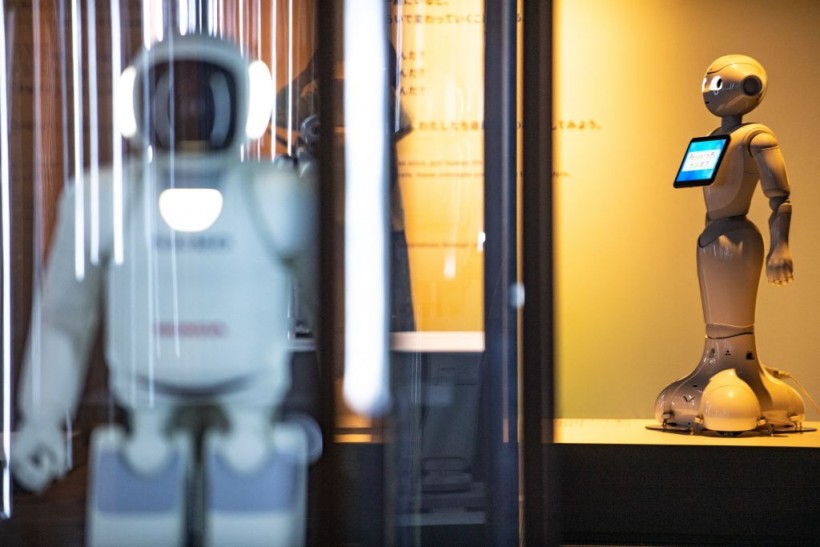In a study that delves into the ever-evolving world of robotics, researchers have embarked on an intriguing challenge: pitting humans against 27 humanoid robots to see who is "far superior."
The study was led by Robert Riener, a professor specializing in sensory-motor systems at ETH Zurich and the founder of Cybathlon. It aimed to establish criteria for a meaningful comparison between human and robotic capabilities, excluding specialized industrial robots designed for specific tasks.
The focus was on humanoid robots that share anatomical similarities with humans, ensuring applicability within human-designed environments.

Robots "Asimo" by Honda Motor (L) and "Pepper" by SoftBank Robotics are displayed during the "You and Robots ? What is it to be Human?" exhibition at the National Museum of Emerging Science and Innovation in Tokyo on March 22, 2022.
Humans vs. Robots
The selected robots were limited to those with two or four legs, enabling them to navigate stairs, possess a slender physique for passing through doorways, and stand at least 50 cm tall with arms and hands or extendable appendages for object manipulation.
Additionally, criteria included quiet operation and the absence of exhaust emissions to facilitate human-robot collaboration. Surprisingly, when assessing individual components like microphones compared to ears or cameras versus eyes, robots consistently outperformed humans in key sensory-motor properties.
Technological advancements, such as the utilization of rigid carbon fibers, surpassed the mechanical capabilities of human bones. However, despite these individual component advantages, constructing a robot with superior overall movement and perception capabilities than a human remains a challenge.
Read Also: Robotics Meets Paleontology: How a 450-Million-Year-Old Organism Is Being Modernized for Softbotics
Humans Outperform Robots
Further findings indicated that in tasks requiring a combination of movements, humans generally outperform robots. While robots may excel in precision-based functions and activities, such as balancing on one leg, they struggle to match the agility, versatility, and endurance displayed by humans.
For instance, robots exhibit rapid object manipulation, but their agility and finger-manipulative skills lag behind human capabilities. Regarding specialized movements like swimming, crawling, and jumping, robots demonstrated proficiency in selected activities but fell short in combining multiple movements seamlessly, an area where humans naturally excel.
When it comes to playing football, robots are far from emulating the dynamic and strategic prowess of human players. Riener acknowledged the remarkable progress made in robotics in recent years and emphasized the potential benefits of integrating robots into human environments for tasks that are challenging or hazardous.
He recognized the complexity of man-made environments and emphasized the need for robots to operate autonomously and error-free within these intricate settings.
Riener expressed confidence that with advancements in technical components, more intelligent robots capable of improved interaction with humans will emerge. He suggested focusing on enhancing system engineering and automatic control technology to integrate existing powerful components effectively.
This could open doors to applications in fields like nursing, home care, construction, and household tasks, providing essential support in situations requiring assistance and alleviating the burden on human resources. The study's findings were published in the journal Frontiers in Robotics and AI.
Related Article: Robot Control Method Inspired by Human Arm Unveiled in Beijing; Assembling Space Satellites Soon






